- Little Forests Kingston
- Posts
- Growing Multispecies Cities
Growing Multispecies Cities
Plus: Help us plant the Little Forest in Grenville Park next weekend!
Happy Binaakwe-giizis (Falling Leaves Moon) or Bnaakwii-giizis (Harvest Moon)! We hope you have had the opportunity to appreciate the leaves changing colours and the asters and goldenrod in full bloom! Fall is a beautiful season, but also a reflective one, as many of our Earthly Kin fall dormant and hunker down for winter.
“This is a time of letting go, reflection, and preparation, when the natural world teaches us about cycles of change, renewal, and the importance of balance. In many Indigenous traditions, the Falling Leaves Moon reminds us that all things are connected and that endings are not final but part of a greater circle of life.”
Of course, the Moon is also named Bnaakwii-giizis, as the Land gifts us a bounty of delicious, healthy, and hearty foods. In a time where fresh fruits and vegetables are so readily available, it is all the more important to remember the principles of the Honourable Harvest, and not to overlook Mother Nature’s generosity.
In the spirit of the National Day of Truth and Reconciliation (also known as Orange Shirt Day) last week, I would also like us all to take a moment to reflect on the significance of traditional foods and foodways for Indigenous peoples. Indigenous peoples have been stewards of the Land long before European colonists arrived in Turtle Island, developing their own agricultural and hunting practices (such as the famous “Three Sisters”) to grow and gather food in harmony with our Earthly Kin. Decades of hostile policies implemented by the Canadian government in an attempt to dispossess Indigenous communities of their Lands and assimilate Indigenous persons has resulted in a loss of many of these traditional ways of life.
“Historical and intergenerational trauma have impacted Indigenous communities very greatly, and especially when it comes to our foodways. [...] All of these [colonial influences] have stopped the generational transfer of food knowledge to the next generation, so that, unfortunately, only a few people at Red Lake practice these traditional foodways.”
“As colonisation crept in and our lands were taken and our traditional food pathways were cut off, the government started supplementing our traditional needs with commodities, and with these commodities came diet-related health disparities, and even though it filled their bellies, it gave people diabetes, and obesity and heart disease.”
“[Our foodways] are really important to maintaining our relationships with our more-than-human kin, they’re really important as part of that intergenerational knowledge transfer between elders and the future generations. The people strongly believe that when we’re practicing our foodways, we are healthier and we feel better. One of my interviewees said that berry picking just brings her joy and happiness, so it’s even good for our mental health. These foodways are significant to our culture and our language, as well as to maintaining our natural resources in a good and healthy way”
I encourage you to watch the full presentation by Ashleigh Thompson, from which the quotes above are taken, to give you a better understanding of why Indigenous food sovereignty is so important and how it has changed over the past few hundred years. If you’d like to learn a bit more, check out the resources that the Native American Food Sovereignty Alliance (NAFSA) have created. More locally, our friends at the All Our Relations Land Trust are working hard to support Indigenous Land stewardship, food sovereignty, and cultural revitalisation. Both of these organisations accept donations, so if you’d like to contribute to these key initiatives, I’m sure they would be grateful for your support.
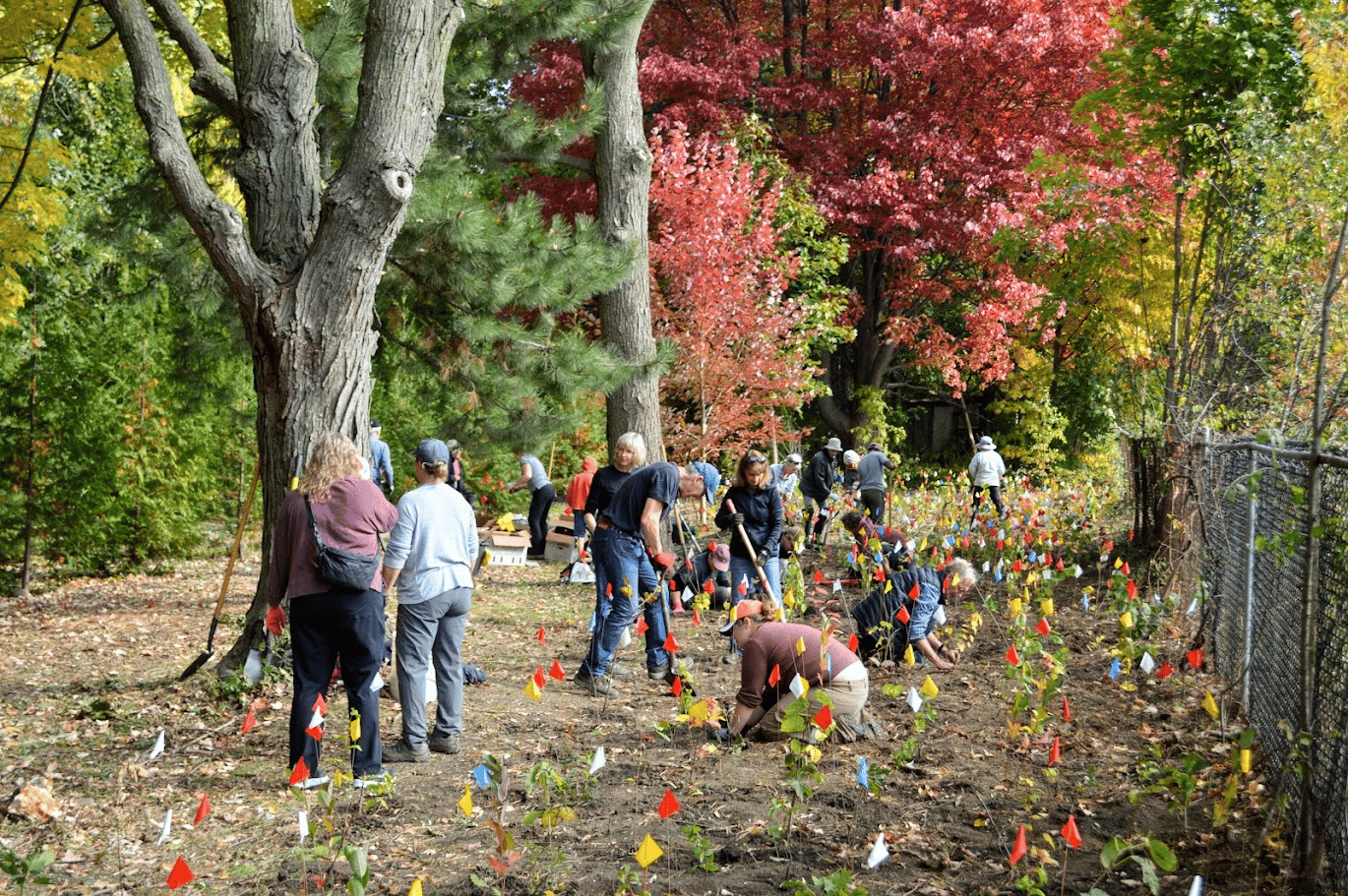
Help Us Plant Grenville Park!
It’s that time of year again!
Who: Everyone is welcome
What: Plant 1,000 native trees and shrubs
Where: The corner of Grenville Road and Westview Road
When: Saturday, October 18th, and Sunday, October 19th, from 9 am to 4 pm
Bring: A shovel if you can. Also dress for the weather and bring your water bottle!
Pockets of Ecology: Making multispecies infrastructure
Many people might assume that, as someone who loves plants and nature, I would far prefer to live in a cabin in the woods than a big city full of concrete and steel. There are certainly moments when I feel that way, but the truth is, cities fascinate me. I’ve always been drawn towards these large population centres, filled to the brim with humans and showcasing a diversity of culture and experience that is hard to wrap your head around.
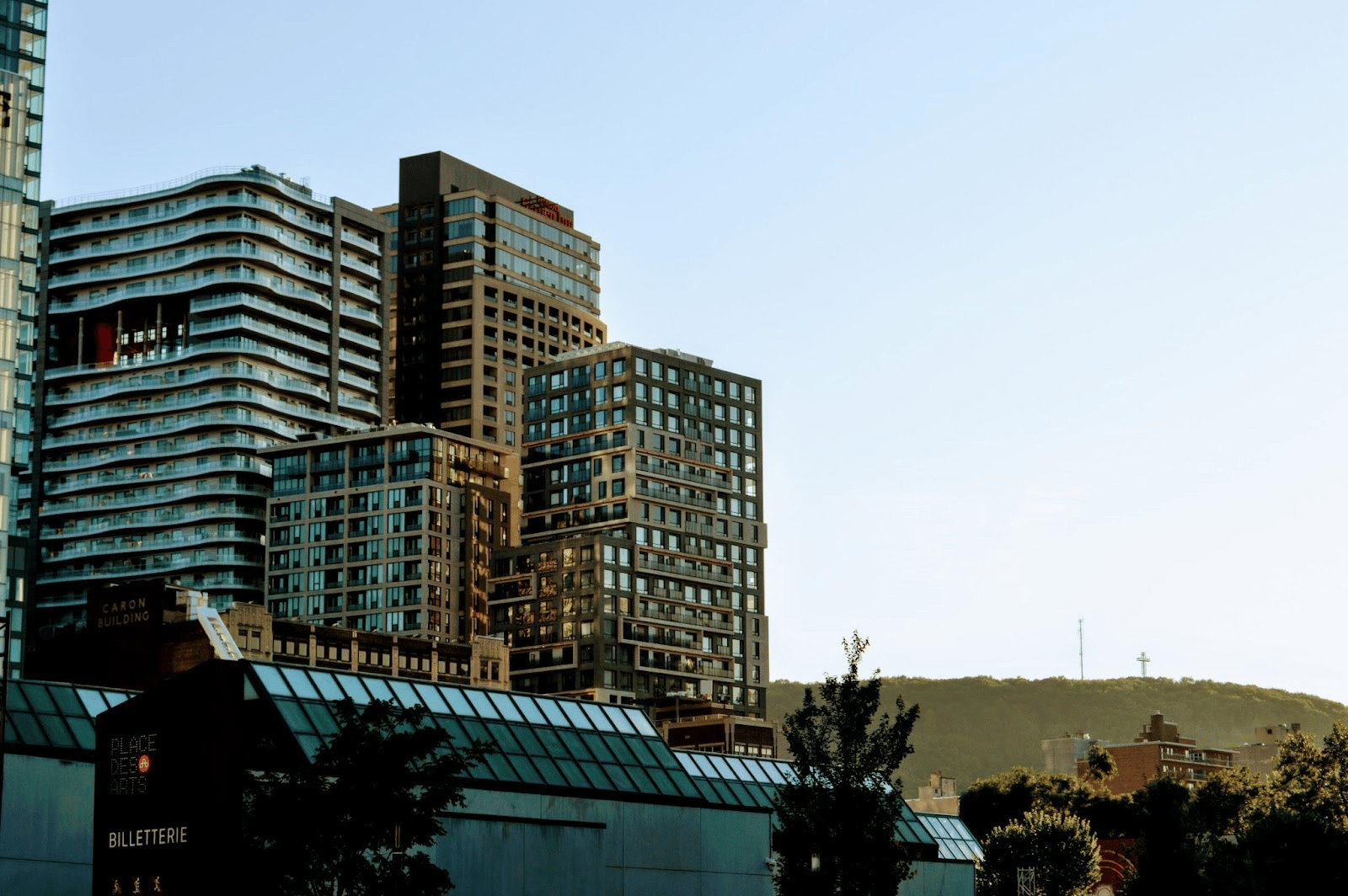
But not all is perfect in urban environments. To love a city is not to keep it as it is, but to push ever forward to make it more equitable, environmentally-friendly, and ecologically functional. Over the years, I’ve learned about some of the principles, ideas, and solutions behind the new urbanist movement to make our cities more accessible and multimodal. More recently, “green/blue infrastructure” and nature-based solutions have been a hot topic, mainly as a way to reduce the risk of flooding and improve the city’s capacity to manage stormwater. But today, let’s talk about how we can design cities, and particularly our infrastructure, for multispecies equity.
I am fortunate to have had the chance to live in Montreal for the past four years, and I must say, I am VERY impressed with the things going on there. Changes are being made month after month and year after year, and all for the better. More bike lanes, pedestrian streets, and public transportation options mean we can all choose to travel sustainably.
Private road transportation is much more harmful than public transportation, generally, both because more land must be disrupted to provide space for more vehicles, and because these busy roads become major barriers that break ecological corridors, restricting the movement of wildlife across the road’s axis. Roads also generate a lot of pollution and turbulence, which push away pollinators and prevent them from accessing roadside flowers. There is an entire field of study known as road ecology, which looks at the impacts of roads on ecosystems, and they are staggering. Awareness of the effects roads can have on wildlife is spreading, however, and steps are being taken to address this.
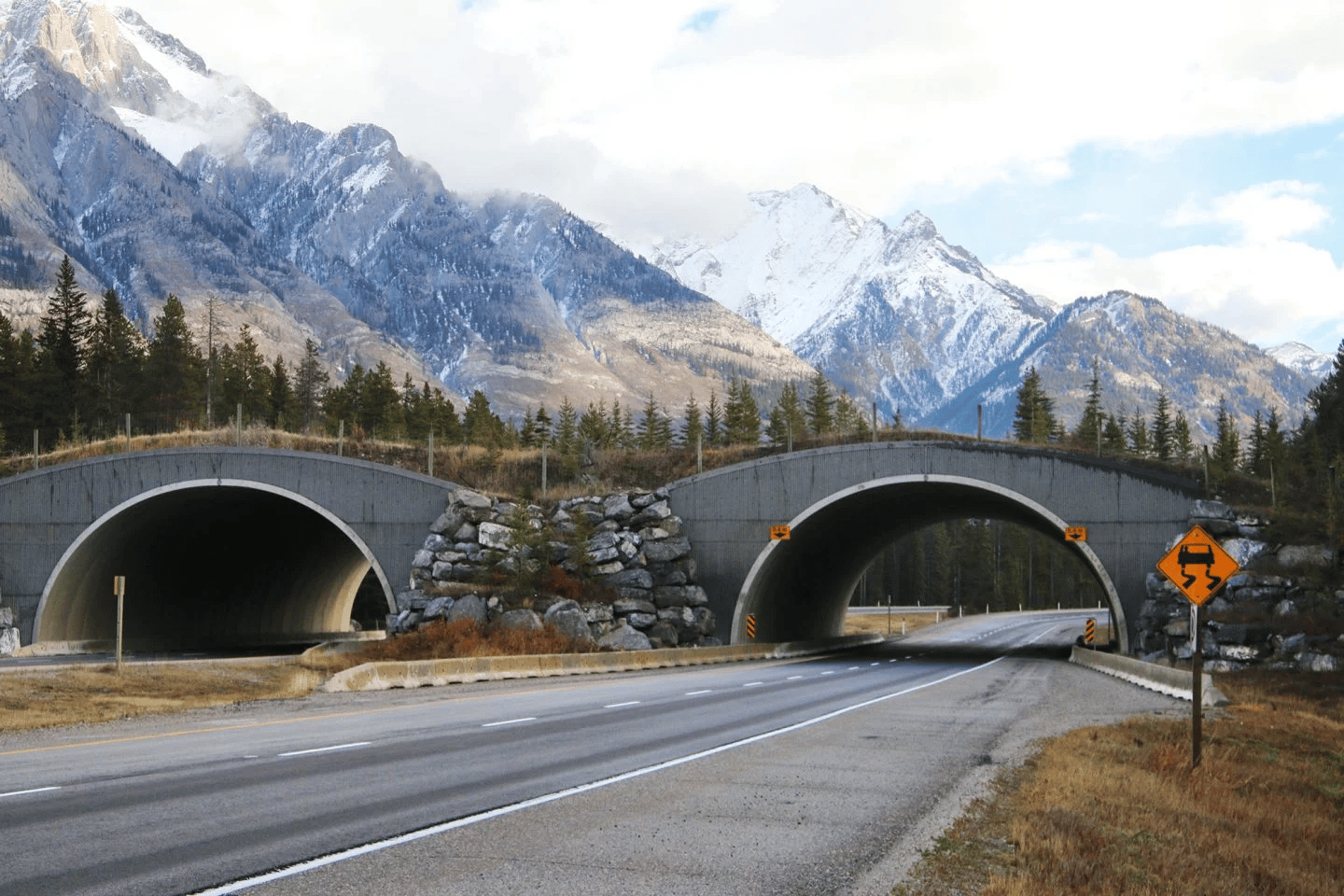
Source: Canadian Geographic
One of the solutions to this problem is wildlife overpasses and underpasses. They create a link across the road to protect wildlife from vehicular traffic and ensure that they can safely and comfortably migrate across highways. Fencing is usually installed along the roadway to encourage wildlife to take the overpass, with a few spots where they can jump out in case someone accidentally ends up on the road. Banff is the leader in this kind of infrastructure, with 38 underpasses and 6 overpasses to help facilitate the movement of wildlife across the national park. The Algonquin to Adirondacks (A2A) Collaborative have done their own research on the impacts of the roads and highways that cross the Frontenac Arch, and as it so happens, there is a public consultation open on the topic of widening a segment of the 401 (learn more and give feedback here), which is something that they’ve researched in depth.
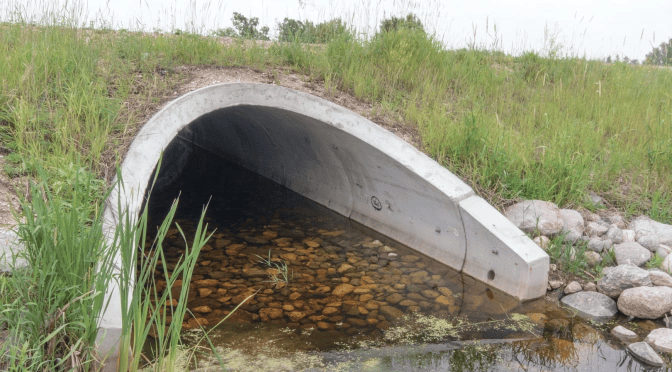
A well-designed culvert. Source: Crossroads
Culverts under roads and other infrastructure serve a similar purpose. Many were originally designed simply to avoid water damage, but now engineers and policymakers have realised that culverts are also critical to ensure the passage of aquatic and riparian species along the length of streams and rivers. There are regulatory requirements that have been put into place to ensure this passage, but some older culverts are still problematic, especially “perched culverts”, which are above the water level and make it difficult or impossible for fish to travel upstream.
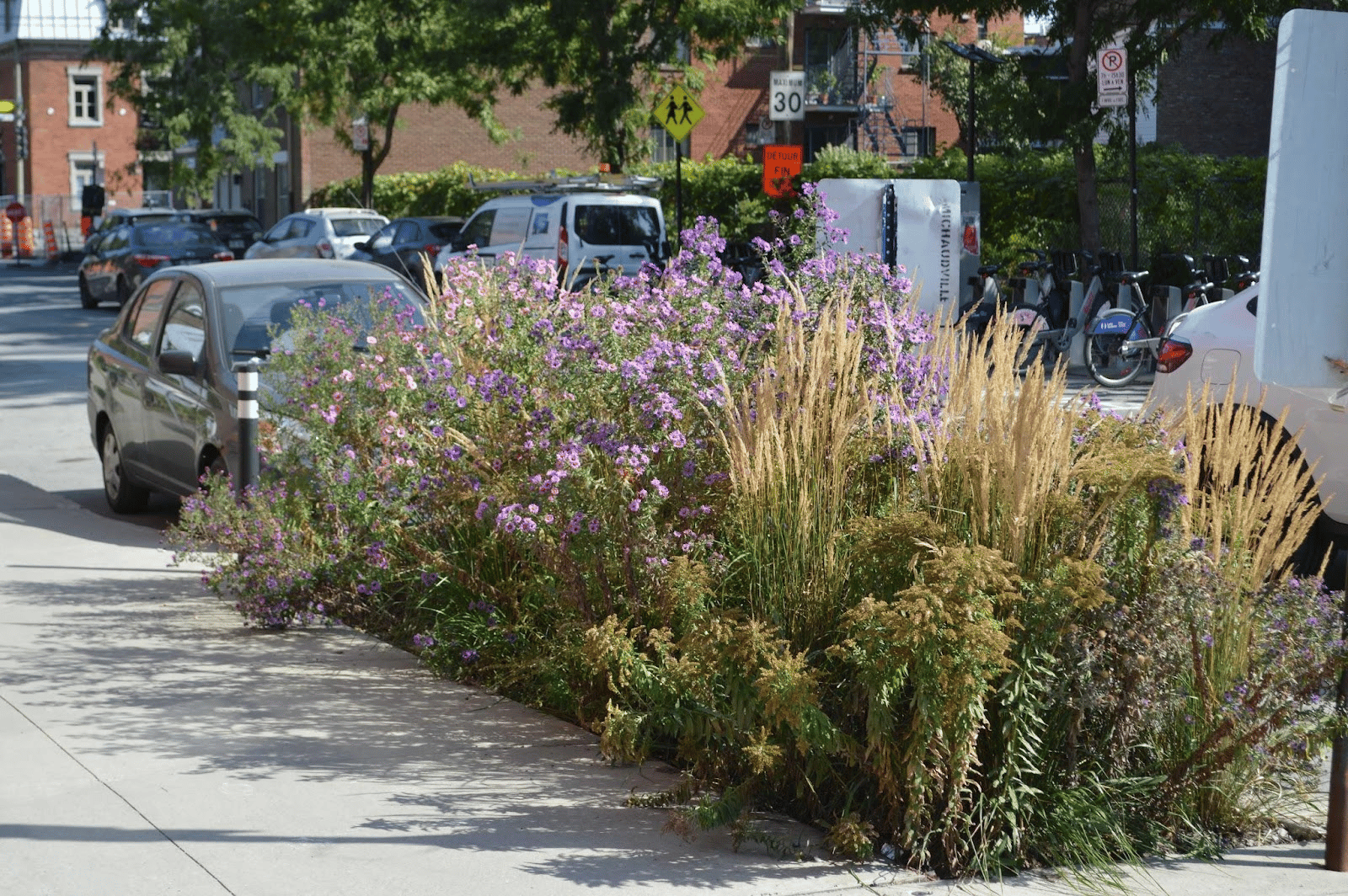
Let’s look at something a little smaller. The City of Montreal has undertaken a number of initiatives to improve pedestrian and cyclist safety, and one classic way to achieve this is to build curb extensions. These make pedestrians more visible and narrow the road to make drivers slow down. But in my neighbourhood, the city’s curb extensions also include these beautiful little patches of vegetation that form what I can only describe as a micro meadow (see the above photo). Every fall, the sight of asters and goldenrod in bloom is refreshing, especially considering that they are important native plants that the pollinators love. Meadows can be particularly hard to come by in the city because some people describe them as “untidy”, but I’m grateful that Montreal has decided to take them to heart.

The above photos show some changes made to the northern part of Avenue Papineau after it was redone 8 years ago. They now have nice wide sidewalks, a multi-use pathway next to some more natural meadow plants, and trees all over the place. There are also bioswales that help absorb rain. When I visited this location during the summer of 2023, I was especially moved by the calls of countless insects living in the meadows. It’s easy not to notice the absence of insect sounds when you live in a big city, but you realise what’s been missing when you go to a place like that and hear them again. It’s easy to see why there are so many insects here; many species can benefit from the high-quality habitat and the potential to travel across this major road axis through the trees.
While I don’t have any first-hand examples, Toronto is another city making a big push for multispecies equity. They have been a certified bird-friendly city since 2021, and currently are one of only three cities (the other two being London, Ontario, and Sainte-Anne-de-Bellevue, Quebec) to receive a “high” level of bird-friendliness. The city first implemented their Fatal Light Awareness Program (FLAP) policy for “turning off the lights” during bird migration season nearly 20 years ago, and became the first city to develop a guideline for bird-friendly development in 2007. As of 2020, Toronto is also a member of the international biophilic cities network.
We’ve discussed ecological connectivity quite a bit over the past few editions of this newsletter, so I won’t get too much into depth on that topic in this article. However, it remains an integral part of creating a multispecies city. Joyce send me Edmonton’s City Plan earlier this week, which has this awesome map of its “Green and Blue Network” showing the network of ecological corridors and nodes across the city.
Protecting biodiversity is an important challenge that we face, but it is also at odds with development and densification, which we need to increase the amount of housing available. However, there are many ways that we can accommodate biodiversity while densifying cities. Not only that, but there are lots of local Canadian examples from which we can be inspired. Kingston may be a small city, but if there’s anything we’ve learned over the past few years, it’s also a mighty city. We’ve got lots of dedicated counsellors, city staff, and citizens that are all working to make our home a better place - let’s keep learning, keep changing, and keep listening to our Earthly Kin.
- Robert

